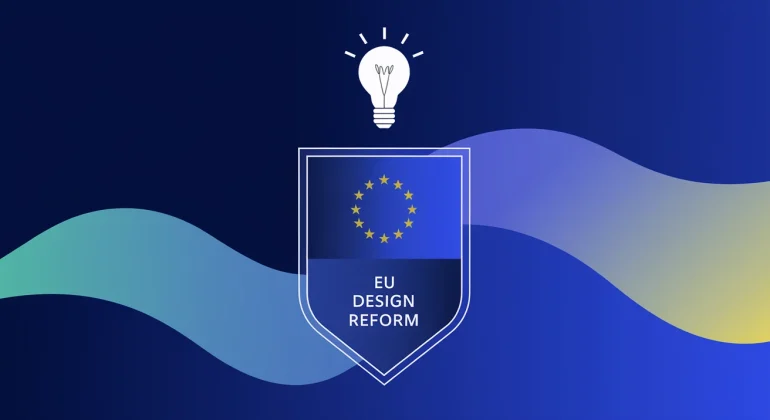Wine counterfeiting: how to respond to brand or appellation infringement
Wine counterfeiting is a growing concern in the U.S. and worldwide. Fraudsters may illegally use a producer’s trademark, replicate a label design, or falsely claim an American Viticultural Area (AVA) to profit from a winery’s hard-earned reputation. Whether you’re a boutique producer in Napa Valley or a large-scale winery in Washington State, safeguarding your brand identity is vital to maintaining consumer trust and financial stability.
This article explains how to detect and respond to wine counterfeiting or misuse of a brand or appellation in the United States, covering the legal frameworks, best practices to protect your winery’s image, and the scope of possible actions—both domestically and internationally.
Understanding Wine Counterfeiting in the U.S. Market
General Definition of Counterfeiting
In broad terms, counterfeiting involves the unauthorized reproduction or imitation of protected intellectual property (IP). Within the wine industry, this may include:
- Unauthorized use of a registered trademark
Example: A bottler selling lower-quality wine under a recognized name to capitalize on that brand’s reputation. - Label or packaging replication
Fraudsters may closely imitate or replicate a legitimate producer’s labels, logos, or overall design to deceive consumers. - Improper AVA or regional claims
Using a term like “Napa Valley” or “Willamette Valley” without meeting federal and state AVA requirements (e.g., TTB rules) constitutes a form of geographic misrepresentation.
Economic and Safety Ramifications
- Brand damage: Substandard counterfeit wines can undermine a producer’s reputation for quality.
- Financial losses: Industry groups, such as the Wine Institute, estimate that counterfeits and misleading labeling cost U.S. wine producers millions of dollars in lost revenue.
- Health concerns: Some counterfeit wines contain unregulated or unsafe ingredients, putting consumers at risk.
International Context
American wines, especially those from prestigious AVAs like Napa Valley, Sonoma County, or the Willamette Valley, are in high demand globally. Counterfeiters may exploit brand recognition to sell imitation products in overseas markets. U.S. producers often need to secure trademark or brand protection abroad (e.g., via the Madrid System under the World Intellectual Property Organization, or direct filings in target export countries).
Types of Infringement: Brand, Appellation, and Mislabeling
Brand Infringement
When someone else uses your federally registered (or common law) trademark without permission, they may:
- Directly copy your brand name or logo.
- Adopt a confusingly similar name (e.g., changing one letter or adding a minor word) to trade on your brand’s goodwill.
- Mimic your label design (colors, fonts, layout) to deceive consumers.
Appellation Misrepresentation
In the U.S., American Viticultural Areas (AVAs) are geographically defined wine-growing regions certified by the Alcohol and Tobacco Tax and Trade Bureau (TTB). Misrepresentation includes:
- Using an AVA name improperly
For instance, labeling a wine “Napa Valley” when less than 85% of the grapes are from Napa or if the wine doesn’t meet other TTB requirements. - Falsely suggesting a region
Terms like “Champagne,” “Port,” or “Burgundy” have international naming regulations. In the U.S., some of these names may be grandfathered for older producers, but new labels generally must comply with truth-in-labeling rules.
Illicit Labeling Practices
Even if a producer isn’t directly stealing a brand name, they might violate TTB regulations by listing false or misleading descriptors on the label. Examples include:
- Incorrect varietal or vintage claims
- Bogus designations such as “reserve,” “estate,” or “old vine,” if those terms are not accurate or recognized.
- Misleading references to sustainability, organic certification, or production methods.
Detecting Counterfeit Wines and Gathering Evidence
Red Flags
- Unusually low prices for wines purportedly from a high-end region or producer.
- Suspicious distribution channels—online auctions, gray-market retailers, or unknown importers.
- Label inconsistencies—poor print quality, incorrect typographical details, missing mandatory warnings or TTB-required information.
Documenting the Infringement
Compiling evidence is essential before initiating legal action or a cease-and-desist letter:
- Photographs or scans of the suspect label: capture the front and back labels, cork, capsule, and any serial markings.
- Invoices or receipts to show the source and price of the counterfeit wine.
- Lab analysis (if appropriate): Forensic testing may confirm that the liquid does not match the legitimate wine’s chemical profile.
Practical Tip: Retain physical samples of the alleged counterfeit bottles, ideally sealed and notarized or documented by a legal professional, to serve as proof during litigation or TTB review.
The Value of Ongoing Monitoring
- Trademark watch services: Engage a specialized agency or use USPTO watch services to identify potentially infringing or confusingly similar marks.
- Market checks: Periodically review online stores (domestic and international) and local retailers, especially in emerging markets where counterfeits are more common.
Legal Remedies and Enforcement Options
The Cease-and-Desist Letter
Often the first step, a cease-and-desist letter formally notifies the infringer that they must:
- Immediately stop using the brand, label, or appellation.
- Remove infringing products from the market.
- Destroy or surrender remaining inventory.
- Pay damages or seek a settlement for lost revenue and harm to reputation.
In some cases, if the violation is unintentional or minor, the infringer may comply to avoid legal escalation.
Litigation and Court Actions
If the infringer refuses to comply or the financial harm is substantial, a winery can pursue legal action:
- Civil suit in federal court: This can yield damages (including treble damages for willful infringement), injunctive relief to stop further infringement, and potential recovery of attorneys’ fees.
- Criminal prosecution: For egregious counterfeiting operations, law enforcement agencies (like the FBI or local authorities) might get involved if there is evidence of fraud, smuggling, or organized crime.
Example: Large-scale counterfeit rings selling imitation Napa Valley Cabernet abroad might face federal charges for violating trademark laws, wire fraud, or even money laundering statutes.
Role of U.S. Customs and Border Protection (CBP)
For import or export of counterfeit products, CBP can detain or seize shipments at U.S. ports of entry if a brand owner has recorded its trademark with the agency’s Intellectual Property Rights (IPR) e-Recordation system. This prevents counterfeit goods from entering (or leaving) the United States, saving brand owners from chasing infringers post-distribution.
Case Studies, Statistics, and a Hypothetical Example
Notable Case: Counterfeit “Napa” Wines in Asia
Groups like Napa Valley Vintners have periodically confronted counterfeiters producing “Napa” wines in China and other parts of Asia using imitation labels.
- Approach: They collaborate with U.S. and foreign authorities, leveraging trademark registrations and local enforcement.
- Result: Seized counterfeit stock, criminal fines for producers, and improved AVA recognition in key markets.
Stats on Economic Impact
A 2025 study cited by the Wine Institute (wineinstitute.org) estimated that global counterfeiting of American-made wines accounted for over $500 million in annual losses. High-profile AVAs, such as Napa Valley and Sonoma County, were the primary targets, but smaller regional producers have also been affected.
Hypothetical Example: “Sundown Cellars”
“Sundown Cellars,” a Washington-based winery, discovers an online retailer selling bottles labeled “Sundown Estates” with an almost identical logo and design.
- Evidence gathering: They purchase samples, photograph the counterfeit label, and retain invoices.
- Cease-and-desist: The winery sends a formal demand letter to the retailer and the purported importer.
- Litigation: The retailer refuses to comply. Sundown Cellars files a trademark infringement lawsuit in U.S. federal court.
- Outcome: The court issues an injunction, orders destruction of the infringing stock, and awards damages to Sundown Cellars.
Best Practices to Prevent Counterfeits and Protect Your Wine Brand
Proactively Register Your Brand
- USPTO trademark registration: Filing with the U.S. Patent and Trademark Office is crucial for nationwide protection.
- State registrations: May offer limited local coverage, but if you plan to sell across state lines, a federal mark is essential.
- International coverage: For export markets, consider the Madrid Protocol or direct filings in strategic countries.
Enhance Label Security and Traceability
- Advanced label features: Holograms, microtext, QR codes, or serialized capsules.
- Batch and lot tracking: Use scannable barcodes or RFID technology to confirm authenticity.
- Blockchain solutions: Some wineries are experimenting with blockchain to provide an immutable record of each bottle’s journey from grape to shelf.
Implement a Vigilant Monitoring Strategy
- Online surveillance: Regularly check e-commerce platforms and auction sites for suspicious listings.
- Collaboration with industry groups: Associations like Napa Valley Vintners, Sonoma County Vintners, Washington Wine Institute, etc., can share intelligence and coordinate legal actions.
- Customs enforcement: Record trademarks with CBP to interdict counterfeit shipments at borders.
Conclusion and Call to Action
Wine counterfeiting is not just an economic threat; it poses a significant risk to your brand’s integrity. As more consumers discover and appreciate U.S. wines, counterfeiters grow increasingly sophisticated. Proactive legal registrations, robust label security features, and rigorous market monitoring form the backbone of an effective anti-counterfeiting strategy.
By securing federal and international trademarks, collaborating with enforcement agencies, and acting swiftly when a counterfeit is discovered, wineries can protect their hard-earned reputations and safeguard their revenue.
Why Work with Dreyfus?
- Recognized Expertise: Our team has over 20 years of experience combating IP infringement, with a deep understanding of wine industry challenges.
- Global Network: We collaborate with partners worldwide to address counterfeits and brand abuses in key wine markets.
- Customized Approach: We develop tailored strategies that combine trademark registrations, monitoring solutions, and decisive legal actions.
The cabinet Dreyfus et Associés is in partnership with a worldwide network of lawyers specialized in Intellectual Property.
Dealing with wine counterfeiting or brand misuse?
- Contact us for an immediate assessment of your case.
- Subscribe to our newsletter for the latest legal developments in wine and intellectual property.
- Download our guide, “7 Essential Steps to Combat Wine Counterfeiting,” featuring case studies and a comprehensive checklist.
Useful External Links
- USPTO: uspto.gov
- TTB: ttb.gov
- Wine Institute: wineinstitute.org
- WIPO: wipo.int
- U.S. Customs and Border Protection (CBP): cbp.gov
Protect your legacy and ensure that every bottle bearing your name meets the standards and authenticity your customers expect.










